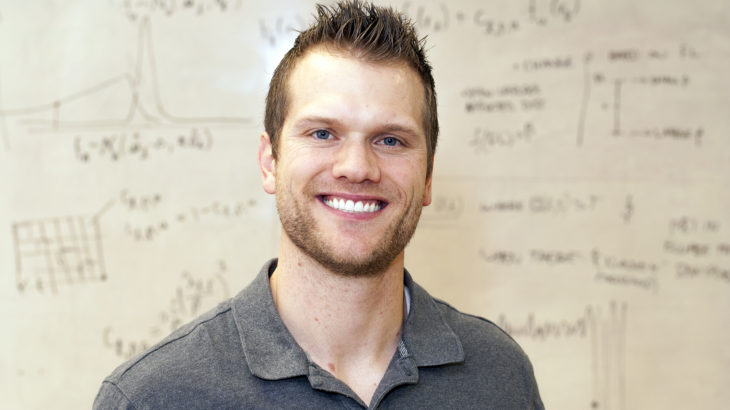Every year, more than 3,400 babies in the U.S. die of sudden unexpected infant death syndrome, often referred to as SIDS. While it’s rare, the chance is something that causes parents a lot of worry, and it helps explain why millions of baby monitors are sold every year.
Relief might be on the way in the form of a technology being developed by Spencer Madsen, a Ph.D. student in Bioengineering at the U. Through the lab managed by professor Neal Patwari, Madsen is creating a wireless breathing monitor that can alert parents when their child’s breathing changes. The related startup company is called PlusOne Baby.
The monitoring system works by sending radio signals around the infant. The infant’s breathing alters the strength of those signals, and the changes in the signals can be used to measure if the breathing is normal or not.
“The sensor works like in-home wifi, where a computer sends data to router and router send information back,” Madsen said. “The two sensors do the same thing.”
He believes the monitoring system has a lot of potential. He is currently dedicating most of his time to developing it, not only fine-tuning the technology but also writing his Ph.D. dissertation on the topic. Others also think there is a lot of potential, if awards and grants are any measure.
Madsen and his company PlusOne Baby won first place and $15,000 in the 2016 Bench to Bedside competition at the U. They secured a $50,000 grant from the National Science Foundation I-Corps program. And they recently secured another substantial grant of an undisclosed amount from the Utah Science Technology and Research Initiative.
With the new funding, Madsen plans to start a new study to show that the technology is effective. Then he hopes to raise enough funding to bring the product to market.
Whatever the future holds, Madsen knows he will continue developing medical devices. “At one point I thought I wanted to work in medicine, but I realized I never wanted to be a physician,” he said. “Cars always fascinated me, but it wasn’t until I found this niche where technology and medicine intertwined that I knew what I wanted to do.”
More articles like this in ‘Student Innovation @ the U!’
Find this article and a lot more in the 2017 “Student Innovation @ the U” report. The publication is presented by the Lassonde Entrepreneur Institute to celebrate student innovators, change-makers and entrepreneurs.




